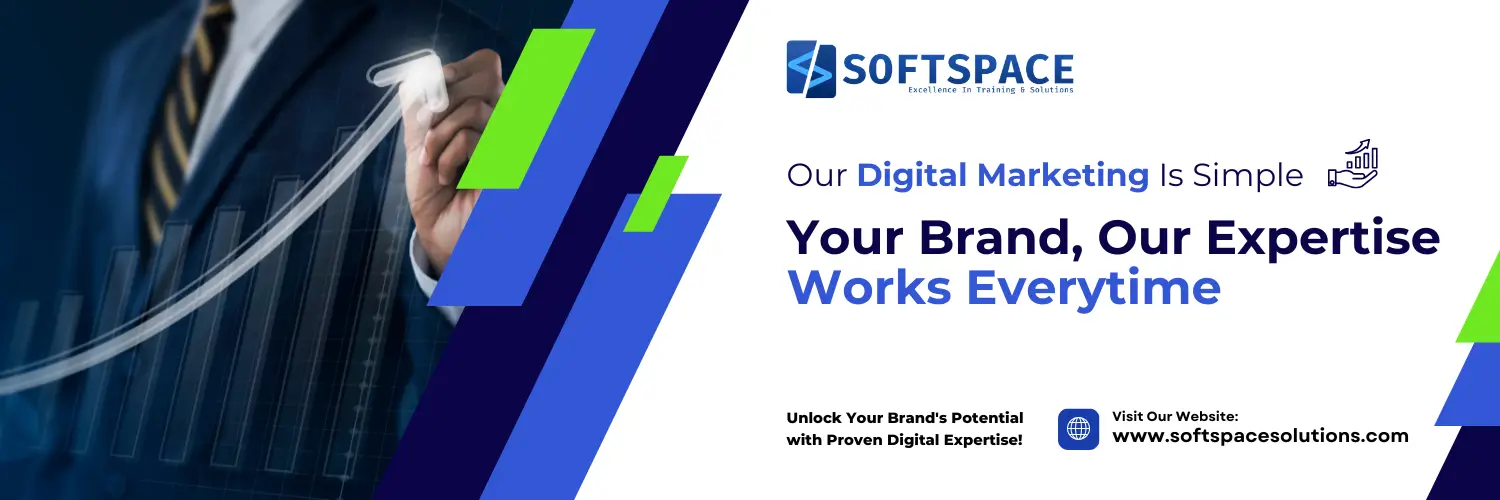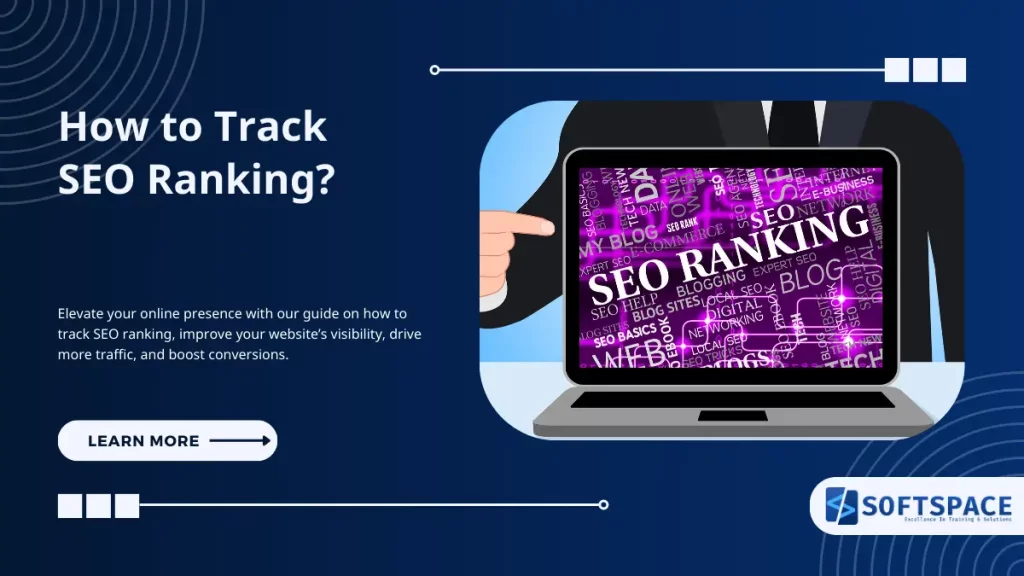Search Engine Optimisation (SEO) has become essential for companies of all sizes in the current digital era, when information is easily accessible. SEO ranking, which establishes where your website appears in search engine results pages (SERPs), has a big impact on your company’s revenue and online visibility.
Increased organic traffic, improved brand awareness, and higher conversion rates are all correlated with a higher ranking. While proper SEO optimisation can facilitate achieving a desired first-page Google ranking, it’s equally important to know how to monitor your SEO progress.
While achieving a desired first-page Google ranking can be facilitated by proper SEO optimisation, it’s equally important to know how to track SEO ranking.
This blog post explores how to track SEO ranking, including its advantages, important metrics, typical challenges, and helpful tips to raise the ranking of your website. You may make data-driven judgements, efficiently track your SEO efforts, and eventually propel long-term business success by being proficient in these strategies.

What is SEO Ranking
In search engine result pages (SERPs), SEO ranking is the position of your website at which it appears when someone searches for certain keywords or phrases related to your content.
In a nutshell, it is the location of your web pages in the natural, non-sponsored searches of Google and other search engines.
When your website ranks higher, it will be listed towards the top in searches. This is a sure way towards increased traffic and visibility.
Many factors, such as backlinks, website performance, relevancy, content quality, and how well your website fits the intent of the search user, all affect your rank.
Benefits of SEO Ranking
- Increased organic traffic: Higher SEO ranking in SERPs increased the visibility and traffic to the website by increasing the organic traffic.
- Enhanced credibility and brand authority: The higher-ranking brands become recognised as experts, which eventually enhances the credibility and brand authority.
- Improved user experience: SEO ranking helps to improve the user experience by improving the page load speed of websites and by a mobile-friendly approach to the website.
- Competitive advantage: Higher SEO rankings can obtain a significant market advantage over competitors and can increase the market share by having a strong online presence.
- Higher conversion rates: SEO ranking increases the possibility of conversions by drawing in highly targeted traffic.
KPI’s to Track SEO
Organic traffic
Organic traffic is a term used for visitors who find your website through natural search engine results.
By showing how well your SEO efforts bring in organic traffic, this metric gives you information about which pages work best and what kinds of content your audience finds engaging.
Keywords Ranking
The website’s position in search results for particular search phrases is indicated by its keyword ranking.
With a higher ranking, this position can directly impact the website’s visibility and potential traffic.
Click-Through-Rate (CTR)
The percentage of people who click on your search result after viewing it is measured by CTR.
A higher CTR suggests that users are successfully attracted to visit your website by your meta titles and descriptions.
You may use this metric to measure how appealing your search listings are, make adjustments to your meta content to increase clicks, and optimise it properly to raise your ranking.
Domain Authority
A search engine ranking score called domain authority indicates a website’s possibility of ranking in search results compared to other websites.
This Moz-created statistic has a range of 1 to 100, where higher scores indicate a greater possibility of ranking.
It helps evaluate your site’s overall SEO strength against competitors, yet it’s not a direct Google ranking factor.
Bounce Rate
The percentage of visitors that quit your website after only reading one page without engaging with it is known as the bounce rate.
A high bounce rate could be a sign of technical difficulties, a bad user experience, or content that doesn’t meet user intent.
Because bounce rate can tell search engines whether your content meets user needs, it is important to understand and optimise for a better ranking.
Backlink Profile
The backlink profile is made up of all external links from other websites that point to your website.
The variety, quality, and relevancy of these backlinks have a big impact on your search engine rankings.
Links from respectable websites in your sector are part of a healthy backlink profile; these links are organically obtained through informative content and sincere connections.
Page load speed
Page load speed measures how fast users can access the content on your website.
It improves user experience and lowers bounce rates and fast-loading pages, especially for mobile searches.
Because Google clearly takes page speed into account when determining rankings, it is essential for both SEO and user delight.
Search Visibility
The total amount of time your website appears in search results for all of your targeted keywords is known as search visibility.
This metric shows what percentage of potential traffic you’re capturing and gives you a general picture of your SEO performance.
Higher search visibility is associated with higher rankings.
How to Track SEO Ranking
Free Tools:
The free tool from Google analyses your website’s performance in search results.
It keeps you updated about technical problems your site might be facing, including indexing status, click-through rates, and usage of search queries.
You can also upload the sitemap and track any issues with mobile usability on the service.
Google Analytics 4
The latest version of the Google Analytics tool monitors user behaviour, traffic, and conversion statistics.
It makes it easier for you to have answers on how SEO efforts lead to real user actions
It expands its insights into user engagement metrics, conversion funnels, and sources for organic traffic.
Bing Webmaster
Much like Google Search Console, it provides information about how your site performs on Microsoft’s search platform.
It has technical SEO tools tailored for Bing’s search algorithm, crawling controls, and keyword ranking information.
Paid Tools:
An extensive set of SEO tools known for their competitive analysis capabilities and large backlink database.
It is excellent at researching keywords, analysing content gaps, and monitoring the SEO health of your website with comprehensive analytics and useful insights.
An all-purpose marketing platform with strong SEO features that provide competitor analysis, site audits, and keyword tracking.
It offers domain comparison tools, comprehensive position tracking, and recommendations for content optimisation based on high-performing pages.
MOZ-Pro
Moz Pro is well-liked among SEO experts because of its extensive site analysis tools and domain authority measures.
Along with rank tracking, site crawling, and on-page optimisation suggestions, Moz-Pro has a simple design that is suitable for both beginners and specialists.
Challenges in SEO Ranking
- Algorithm updates: Search engines frequently upgrade their algorithms. Rankings may change significantly after upgrades; therefore, methods must be regularly modified to accommodate new requirements.
- Intense Competition: These days, ranking on high-value keywords is challenging since more businesses are investing in SEO.
- Technical challenges: Technical difficulties that businesses may encounter include improving website performance, complicated site architecture problems, and requirements for mobile friendliness.
- Content-creation challenges: producing high-quality, original content frequently, keeping up-to-date and fresh content, and precisely aligning with user purpose.
- Backlink building challenges: Getting high-quality backlinks naturally, and the cost of link-building campaigns.
Tips to Improve SEO Ranking
- Content optimisation: Produce thorough, in-depth, and updated content that is user-focused and includes pertinent keywords.
- Technical SEO improvements: Make sure the site is mobile-friendly, optimise its speed, and resolve mistakes and broken links. Use the correct URL structure with the HTTPS security.
- User Experience improvements: Enhance the site’s navigation, Boost the speed at which pages load, make explicit appeals to action, and make sure the design is responsive.
- On-SEO Optimisation: Improve meta descriptions and titles with appropriate header tags (H1, H2, etc.), Utilise alt text to enhance photographs.
- Off-page SEO optimisation: Create high-quality backlinks and participate in social media, produce content that may be shared, guest post on relevant websites, and optimise your site for local search engines.
- Regular Evaluations and Updates: Keep an eye on changes in ranking, watch the competition, immediately resolve technological concerns, and adjust to updates in the algorithm.
Conclusion
One important and ever-changing component of digital marketing is SEO ranking. It has a big impact on how visible and how much-focused traffic your website gets. Understanding how to manage SEO ranking and tracking it well requires ongoing monitoring, analysis, and correction. This calls for a thorough comprehension of market trends and best practices. By keeping ahead of the most recent advancements, you can optimise your website for sustained performance. It is crucial to regularly evaluate the performance metrics of your website, including organic traffic, keyword ranks, and website authority.
You can identify areas of concern and put plans in place to improve your website’s exposure in search engine results by using this data-driven method. Monitoring your competitors’ SEO initiatives can provide insightful information about market trends and new business prospects.
These techniques, when combined with a strong emphasis on producing relevant, high-quality content, can help you raise your website’s SEO ranking and promote organic growth.

13+ Yrs Experienced Career Counsellor & Skill Development Trainer | Educator | Digital & Content Strategist. Helping freshers and graduates make sound career choices through practical consultation. Guest faculty and Digital Marketing trainer working on building a skill development brand in Softspace Solutions. A passionate writer in core technical topics related to career growth.




